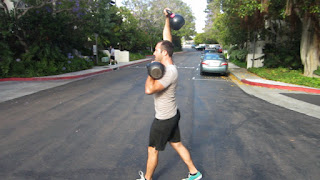Many of the people that love the gym, or fitness can fall in love with the weights. Just like a combat athlete that falls in love with one combination or one submission; it can become your Achilles heel. In this article we are going to look what “cardio” is and what it isn’t, why it is important for your gains in the gym, recovery, overall health and dare I say your longevity. Just stick with me until the end it may get a little scientific, maybe a little silly, but hopefully you see the importance of cardio.
What is Cardio?? It is defined as aerobic exercise that stimulates and strengthens the heart and lungs. This is correct but like an old boss used to say the reality is its so much more then that See the sidebar for what cardio actually is :
\
In order to meet said demand, you see what I did there. ;) Our bodies demand energy or fuel for each action. Basic Break down of Energy systems.
Now that we have shed some light on the importance of cardiorespiratory fitness. Lets look at resting heart rate (RHR) and the heart rate zones this is like the RPE for the heart. This is one of the key points of aerobic capacity and heart health. A normal RHR is from 60-100 bears per minute, most health adults range between 55-85 beats per minute. Some of the factors that affect the RHR are
Stress
Anxiety
I would take my resting heart rate upon waking over the course of a week and use the average as to avoid the above complicating factors.
What’s your Max bro???
An easy equation determine your max
heart rate is
220- your age in years= Max Heart rate
This leads us to the heart rate zones. They are based off of percentages of the maximum heart rate See below
Zone | % of Heart rate rage | Example Duration |
1 Very Light | 50-60% | 20-40 minutes |
2 Light Conversational | 60-70% | 40-80 minutes |
3 Moderate | 70-80% | 10-40 minutes |
4 Hard | 80-90% | 2-10 minutes |
Maximum | 90-100% | Less than 5 minutes |
You are probably thinking thats a lot of information you just gave me. What does it mean for me? Yes it is and likely it's only the tip of the iceberg. All of this information means is we need a fully encapsulated approach, cardio, resistance training, balance, nutrition stress management, sleep management. So as to balance out what we are attempting to do; one thing that really drove it home for me was difference in the physiological adaptation of cardio vs lifting weights faster. Performing cardio works in the heart like blowing up a balloon and allowing air to come out, with the rise and fall of blood pressure. When you lift weights faster or really just lift weights its like a hot air balloon it keeps going up and up, the walls of the heart will thicken due to the lack of relief in blood pressure.
What it means in terms of your workouts is simple vary them, use the different energy systems as a guide. Put this into perspective with your profile age, gender, training age, sport application ETC. General guidelines would be using the Cardiac Output method 2-3 times a week 40-60 minutes in zone two, and High Intensity intervals 1-2 times a week 15-20 minutes in duration with work/rest intervals. The work to rest intervals should change as you get into better condition 1-1, 2-1, 3-1. One of the other methods you can use would be the Strongman Endurance method this is essential loaded carries farmers carries, sled work, odd object carries, for timed sets of 60-90 seconds with a rest to work ratio of 1-1 for a total of 20 minutes.
I hope this helps to demonstrate the need to at minimum explore your cardio fitness with the different methods. As well as shine a light on the vast benefits it can provide in longevity, health, increased muscle, increased energy, and quality of life. The people who are my go to in this are Joel Jamison author of Ultimate MMA Conditioning and creator of Bioforce Conditioning. Jason Brown Author of Lower Body Training, Elite FTS and T Nation Contributing author and creator of Conjugate X Conditioning. They are phenomenal resources who both have a knack for taking tough concepts simplifying them to digestible points. I will be posting a follow up where we look at some ways in which we can program cardio for ourselves and our clients.












No comments:
Post a Comment